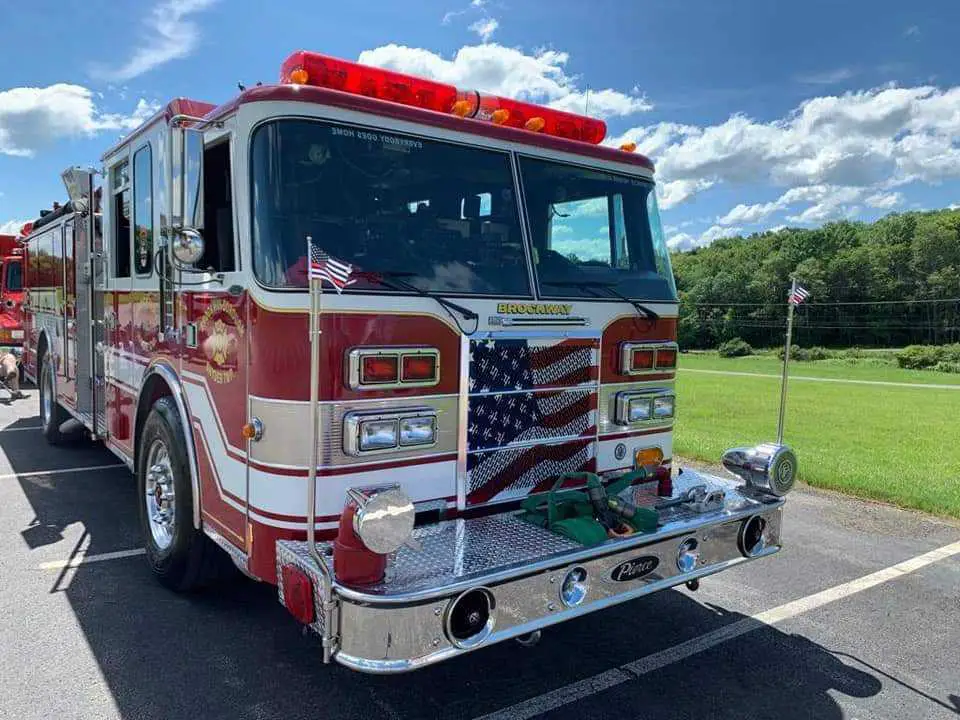 JEFFERSON CO., Pa. (EYT) – A new law expanding online training for firefighters in Pennsylvania could make a difference to many local fire companies.
JEFFERSON CO., Pa. (EYT) – A new law expanding online training for firefighters in Pennsylvania could make a difference to many local fire companies.
Act 106, previously known as Senate Bill 146, passed both the House and the Senate unanimously and was signed into law by Governor Tom Wolf on November 27. It will take effect 60 days from the date of signing.
The legislation directs the Office of State Fire Commissioner to develop an online training system to offer firefighters in Pennsylvania all of the training courses that do no require hands-on field training free of charge.
Currently, firefighters who don’t reside near one of the state’s fire training centers often have to travel to sit through in-person lectures for some classes, while others have already been available online.
This change will allow firefighters the opportunity to complete all of the training that doesn’t require hand-on work online.
Chief David Smith, of the Sigel Volunteer Fire Department, is on board with the changes.
“I think if they’ve going to implement more training online, that would be a positive for the fire service members, to be able to have the training at their convenience on their computer, and if its free, that’s even better,” he told exploreJeffersonPA.com.
Devin Trentini, Assistant Chief for Brockway Volunteer Hose Company, isn’t quite as certain about the change.
“I see both sides of it. I’m an instructor for the intro level program through the fire academy, and while I feel there are certain things you can make online programs, there is a lot of information that I don’t think you can convey as well, in the means necessary,” Trentini said.
Trentini noted that some programs need to be more tailored to the particular individuals attending.
“They’ll try to create one program to fit people from Brockway to Pittsburgh, when those are completely different worlds when it comes to how you handle things strategically.”
According to Trentini, while there is a lot of training required for firefighters, there are already a range of options, from traveling to the state fire academy for free training, though that requires an investment in time, travel, and sometimes overnight accommodations, to academy developed Educational Training Agency programs through community colleges, including the one he teaches for through Butler Community College.
While those programs do have a cost associated, they are sometimes covered by a county, rather than costing each individual fire company money.
“They have a county package that offers unlimited training for a year at no cost to the individual departments.”
However, even when the departments have to pay for programs themselves, Trentini noted the costs are minimal when compared to other costs they regularly cover.
“You can buy individual unlimited training packages for a department for less than it costs to buy a pair of pants for a firefighter,” he noted.
Trentini also explained that while training does take up a significant amount of time, fundraising still takes up even more yet.
“We spend so much time fundraising just to keep the equipment running and pay the utilities, and we do have to balance training with all of the stuff that keeps our doors open. To me, that’s a shame. It’s a shame that fire departments have to spend their time selling chicken and pancakes just to pay the bills. It’s a big problem.”
With training requirements also sometimes cited as a barrier to recruitment and retention, particularly for volunteers, due to the time, cost, and possible travel involved, lawmakers hope this may help boost declining numbers.
According to the National Fire Protection Association, between 2015 and 2017 there was a 20 percent personnel decrease among career and volunteer firefighters in communities across the nation. The Pennsylvania Fire and Emergency Services Institute reports that the number of volunteer firefighters in the state has gone from approximately 300,000 in the 1970’s to just 38,000 in 2018 — despite the state’s population rising from 11.8 million in 1970 to 12.8 million in 2018.
Whether or not cutting down on that possible barrier actually makes a difference in recruitment and retention is something only time will tell.
“It may be a better option or easier for people, but we’ll just have to see,” Smith said.
Copyright © 2024 EYT Media Group, Inc. All rights reserved. Any copying, redistribution or retransmission of the contents of this service without the express written consent of EYT Media Group, Inc. is expressly prohibited.








